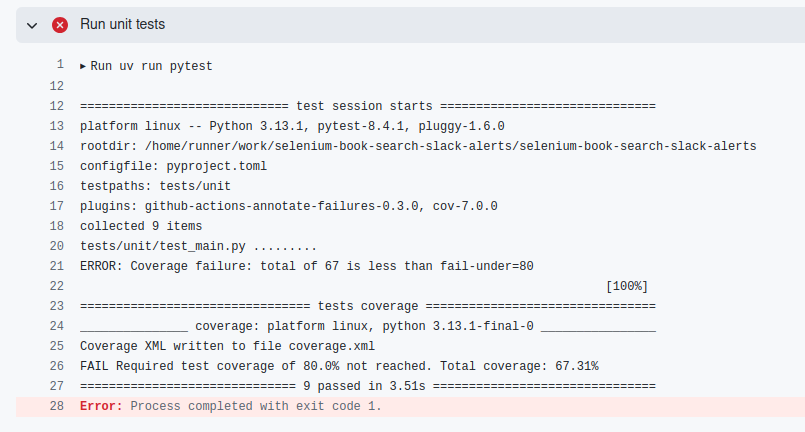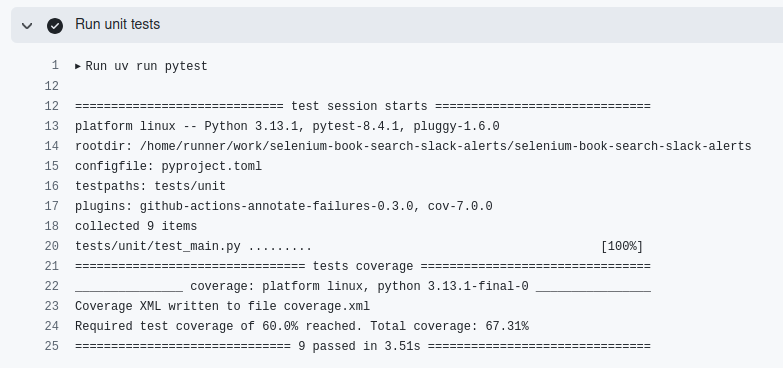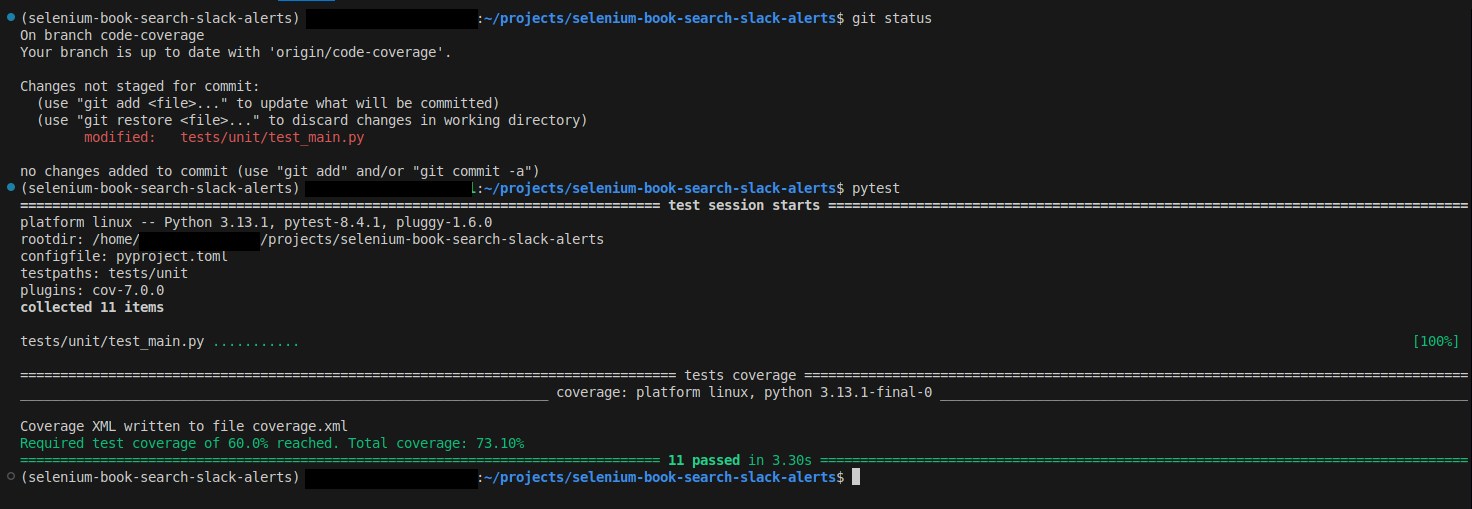Code Coverage - Automating Book Availability Checks
Code coverage measures the percentage of our code that runs when our unit test suite runs.
It helps see how much of our codebase is tested by our unit tests, makes it easier to spot untested code, and can improve code quality over time.
Coverage does not guarantee “good” tests. It simply means that every line ran, not that all scenarios were tested.
All the code changes are in https://github.com/k-candidate/selenium-book-search-slack-alerts/pull/7.
I have it run in PRs with a minimum threshold so that in the future when I introduce changes to the code I have smaller odds of introducing bugs.
This is what it looks like when we are below the threshold:

And when above:

I created a free account with https://codecov.io to visualize the change over time. It also shows us which code runs and which does not when running the unit tests: https://app.codecov.io/github/k-candidate/selenium-book-search-slack-alerts/blob/code-coverage/main.py

To test locally we just use pytest without any arguments nor options and it will pick up the config we have in pyproject.toml:

I added a couple test functions to see the coverage go up:

In these 2 new functions I used fixtures (https://www.geeksforgeeks.org/python/fixtures-in-pytest/) and the yield keyword (https://www.w3schools.com/python/ref_keyword_yield.asp).